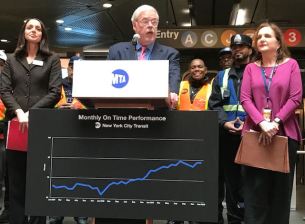The Original Sin of Environmental Review
 No EIS necessary. Photo: tlindenbaum/Flickr
No EIS necessary. Photo: tlindenbaum/FlickrIn the past few months we’ve reported on opponents of bike lanes, car-free parks, and congestion pricing using the pretext of environmental review to stymie initiatives that would reduce vehicle emissions. Norman Oder at the Atlantic Yards Report points us to another unintended consequence of the National Environmental Protection Act, the 1970 legislation that established the EIS process.
AYR recounts a talk given by progressive developer Jonathan Rose, who says that NEPA — favored by a real estate industry that did not want to subject itself to an alternative law based on land use planning — was flawed from the start:
"So the effect was that we turned our back on national planning, and we
turned our back on a national infrastructure policy," Rose said. "And,
at the same time, here’s what happens: 1000 individuals choose to
subdivide a parcel in the suburbs, or the exurbs, and it falls under
the screen of an environmental impact statement, each one is one
individual act.""One person chooses to build a 1000-unit urban
project in a city and they get held up for five years in an
environmental impact statement," he concluded. "And so the unintended
consequence of NEPA actually was one more of the many things that made
it easier for suburban sprawl to proceed from 1970 to 2000 instead of
urban redevelopment."
